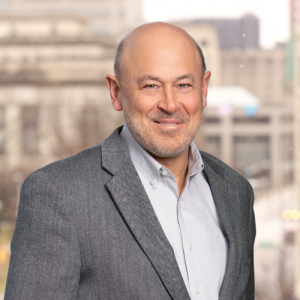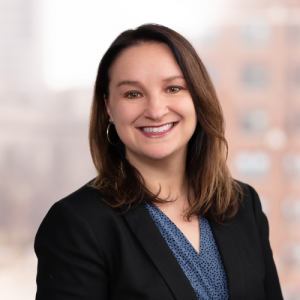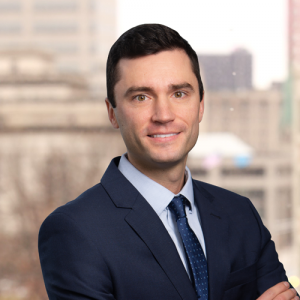On July 12, 2018, the Centers for Medicare & Medicaid Services (“CMS”) released its proposed rule for the Calendar Year (“CY”) 2019 Medicare Physician Fee Schedule (“MPFS Proposed Rule”). Among many other changes, CMS proposed to maintain payments for certain non-excepted (non-grandfathered) off-campus provider-based hospital departments (“PBDs”) at 40 percent of the Outpatient Prospective Payment System (“OPPS”) payment rate. This proposed policy update will continue to impact payment for services furnished at non-excepted (non-grandfathered) locations and undercuts CMS’s goal of achieving site neutrality as payment for the same services furnished in a physician office may be different (either higher or sometimes lower) when furnished by a non-excepted PBD as compared to a physician office.
Less than two weeks later, CMS released its proposed rule for the CY 2019 Outpatient Prospective Payment System (“OPPS Proposed Rule”) where it continued to target payment for services rendered in off-campus PBDs. Specifically, CMS proposed: (1) equalization of payment for E/M visits with the MPFS rate (i.e., at 40 percent of the OPPS rate); (2) re-proposal of the prohibition on expanding clinical families for grandfathered off campus locations; and (3) changes to the Part B drug payment methodology for separately payable 340B drugs that are furnished and billed by non-excepted off-campus PBDs to the same formula applied to excepted off-campus PBDs, i.e., ASP minus 22.5 percent (discussed in depth in a previous health alert).
We encourage hospital providers to submit comments on the MPFS and OPPS Proposed Rules to ensure adequate and appropriate payment to hospitals.
BACKGROUND
As discussed in our previous health law news article from November 3, 2016, CMS implemented Section 603 of the Bipartisan Budget Act of 2015 (“Section 603”) in its CY 2017 OPPS Final Rule issued on November 1, 2016, which established that services at non-excepted (non-grandfathered) off-campus PBDs will be paid under the MPFS as the “applicable payment system” beginning January 1, 2017 rather than the OPPS ambulatory payment classification (“APC”) payment amount.
Simultaneously, CMS issued an interim final rule with comment period (“IFC”) to establish new payment rates under the MPFS for items and services provided by non-excepted (non-grandfathered) off-campus provider-based locations. For CY 2017, CMS scaled the OPPS payment rate by 50 percent in an effort to strike a balance between payment for services furnished in a non-excepted off-campus PBD and services furnished in other settings for which payment is made under the MPFS. CMS arrived at this percentage by comparing the payment under the OPPS to the payment under the MPFS for the 25 most frequently billed HCPCS codes at off-campus PBDs that contained the “PO” modifier between January 1 and August 26, 2016. This adjustment is known as the “MPFS Relativity Adjuster,” which refers to the percentage of the OPPS payment amount paid under the MPFS for a non-excepted item or service to the non-excepted off-campus PBD. In the IFC, CMS stated that it considered this payment reduction to be a transitional policy until it has more precise data to value services provided by non-excepted off-campus PBDs.
Beginning in CY 2018, CMS adopted a MPFS Relativity Adjuster based on 40 percent of the OPPS rate (i.e., a 60 percent payment reduction) based on updated data and included the relative payment rate for HCPCS Code G0463 (the most commonly billed service in the off-campus PBD setting under OPPS) into the analysis.
PROPOSED MPFS RELATIVITY ADJUSTER FOR CY 2019
For CY 2019, CMS employed the same fundamental methodology it used to calculate the MPFS Relativity Adjuster for CY 2017 and CY 2018. Based on its analysis, CMS proposed that it will continue to apply the 40 percent MPFS Relativity Adjuster for services furnished in non-excepted PBDs. However, CMS acknowledged that for certain specialties, service lines and non-excepted off-campus PBDs, Medicare payment for the same services might be lower when furnished in a non-excepted off-campus PBD rather than in a physician office – contrary to site neutrality.
Further, CMS acknowledged that for a majority of HCPCS codes, there is no established methodology for separately valuing the resource costs incurred by a provider while furnishing a service from those incurred exclusively by the facility in which the service is furnished. In recognition of this issue, CMS stated that it is continuing to explore alternatives to their current estimates to better reflect the technical component (“TC”) portion of the non-excepted items and services.
In the meantime, CMS is proposing to maintain status quo for CY 2019. That is, the MPFS 40 percent Relativity Payment Adjuster will continue to be applied for services furnished in non-excepted PBDs, non-excepted PBDs will continue to bill on an institutional claim form using the PN modifier, the OPPS packaging policies will still apply for non-excepted services paid at 40% of the OPPS rate and CMS will continue to apply the same hospital wage index for non-excepted services that would otherwise apply to the hospital’s payments under OPPS.
REDUCTION IN PAYMENTS FOR ALL CLINIC VISITS AT OFF-CAMPUS PBDS
In the OPPS Proposed Rule, CMS is proposing to reduce payment for clinic visit services (as described by HCPCS code G0463) at all off-campus PBDs. CMS is also proposing to pay for these services using the same MPFS Relativity Adjuster that is used for payment at non-excepted PBDs. In other words, if a hospital bills for a clinic visit service at any off-campus PBD, including those that are excepted (grandfathered) from Section 603 payment reductions as indicated by billing with the PO modifier, under the proposal it would be paid at 40 percent of the OPPS rate. It is important to note that on-campus PBDs (including those on the campus of a remote location) and dedicated emergency departments appear to be excluded from these payment cuts.
CMS points out that clinic visits (i.e., HCPCS code G0463) are the most common services billed under the OPPS and are also furnished in the physician office setting. Accordingly, it is targeting this service in an attempt to control the volume of these services under the OPPS. Notably, CMS is proposing to make this change in a non-budget neutral manner, and CMS estimates that this proposed change would result in reduced payments (between the Medicare Program and beneficiary copayments) of $760 million for 2019.
CMS is also soliciting public comments on how to expand its authority to additional items and services paid under the OPPS that may represent unnecessary increases in hospital outpatient department utilization. So additional types of services could be subject to payment cuts in the future, even if they are furnished in an excepted (grandfathered) PBD.
EXPANSION OF SERVICES AT EXCEPTED (GRANDFATHERED) OFF-CAMPUS PBDS
In CY 2017 OPPS rulemaking, CMS proposed, but did not finalize, a policy that excepted (grandfathered) PBDs could continue to be paid at OPPS rates for items and services in each of the 19 proposed “clinical families of services” if that PBD furnished and billed for a service in that clinical family of services prior to November 2, 2015. While CMS did not finalize this policy in CY 2017, CMS noted that it would continue to monitor the volume of services at excepted PBDs to determine if future rulemaking should address service-line expansion.
In the OPPS Proposed Rule, CMS is re-proposing this concept. CMS recognizes that there is no congressional record for Section 603 to support this proposal, but it states that it does “not believe that Congress intended to allow for new service lines to be paid OPPS rates.”
Once again, CMS proposed creating 19 “clinical families of services,” which are defined by APC. Under the current proposal, if an excepted (grandfathered) PBD furnishes services in new clinical families of service, such services must be billed with the PN modifier and would be paid at 40 percent of the OPPS rate. CMS is not proposing to limit the volume of excepted services at a location within an existing clinic family. So hospitals could have both excepted and non-excepted services provided within a single PBD or even during a single patient visit.
In order to establish which clinical families of services will be excepted at a PBD, CMS is proposing that hospitals determine whether the PBD furnished a service in the clinical family during a baseline period from November 1, 2014 through November 1, 2015. If it did furnish a service in the clinical family during that time period, all services in such family would continue to be paid at the full OPPS rate. However, items from other clinical families of services would be paid at the non-excepted rate (i.e., at 40 percent of the OPPS rate). It is important to note that if an excepted PBD first provided services after November 1, 2014 (e.g., a PBD that first furnished services after November 1, 2014 but before November 2, 2015 or a PBD was approved for mid-build status), the period for establishing excepted clinical families should be the one-year period beginning on the first date OPPS services were provided at a location.
PRACTICAL TAKEAWAYS
- CMS’s proposed 40 percent MPFS Relativity Adjuster for CY 2019 will continue for services furnished in non-excepted PBDs, which results in significantly less payment than if the item or service were furnished in an excepted BPD. Payment for certain services may also end up at less than the rate if the service were furnished in the non-hospital setting.
- Under the OPPS Proposed Rule, hospitals would get paid for clinic visit services (as described by HCPCS code G0463) at 40 percent of the OPPS rate at all off-campus PBDs. Hospitals should analyze the impact of this reduction in payments. Whether CMS has the authority to make these payment cuts in a non-budget neutral manner is being evaluated.
- Hospitals should review and maintain documentation for excepted facilities and services, including which clinical family of services were being billed as OPPS covered services at the site between November 1, 2014 and November 1, 2015 (or the one-year period beginning on the first date OPPS services were provided at a location if later than November 1, 2014).
- The OPPS Proposed Rule would require that services at excepted (grandfathered) off-campus PBDs that are in new clinical families of services must be billed with the PN modifier and would be pad at 40 percent of the OPPS rate as of January 1, 2019.
- Stakeholders are strongly encouraged to submit comments to CMS for both proposed rules. Comments are due no later than 5:00 PM EDT on September 10, 2018 for the MPFS Proposed Rule and 5:00 PM EDT on September 24, 2018 for the OPPS Proposed Rule.
If you have questions or would like additional information about this topic, please contact:
- David Snow at (303) 801-3536 or dsnow@wp.hallrender.com;
- Lori Wink at (414) 721-0456 or lwink@wp.hallrender.com;
- Regan Tankersley at (317) 977-1445 or rtankersley@wp.hallrender.com;
- Joseph Krause at (414) 721-0906 or jkrause@wp.hallrender.com;
- Lisa Lucido at (248) 457-7812 or llucido@wp.hallrender.com; or
- Your regular Hall Render attorney.





